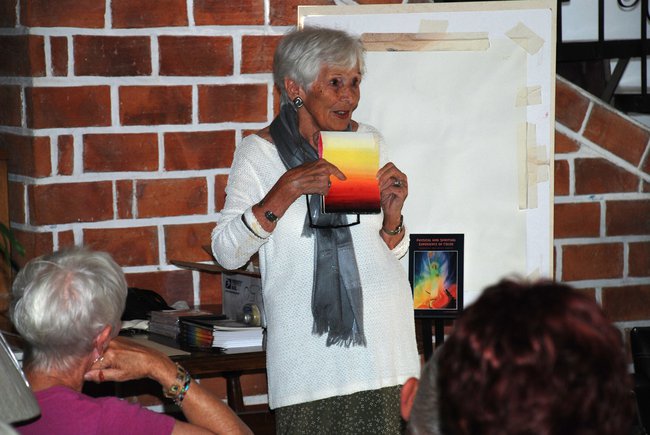Lois Schroff
From the pages of my new book, Physical and Spiritual Experiences of Color: Theapeutic and Artistic Aspects, I have chosen two artists to highlight. Goethe, the literary giant, best known as the creator of the two-part play, THE TRAGEDY OF FAUST. The other is artist Rudolf Steiner, public speaker, philosopher, painter, writer of books and plays, sculptor, architect, founder of new arts of dance, of agriculture, of drawing, of education, of Christian ritual, and of social reform.
Each of these men figures prominently in my new book that I wrote thinking the title would be Imagining Color as Visible Soul, but the publisher decided on the longer title. My 2003 book, Color its Relationship to Soul and Spirit will soon be available in Spanish.
Two words that appear often in my books are “soul” and “spirit.” My belief is that every human being has an individual soul and that there is a world soul permeating everything. “Spirit,” for me, does not mean holy. I define it as the creative field that surrounds, develops, and impregnates everything in the universe.
Differentiating sensory/body responses from soul or spirit responses, using the example of a rose, one can say that through the body I see it, I smell it, I can touch it; but my soul has a response that has to do with my feeling toward it—sympathy or antipathy. My spirit connects me, through thinking, to the spirit that created both the rose and me.
The relationship between the artists I have chosen (separated by a century) is that Steiner as a young graduate with his PhD was hired by the Goethean Society to edit all of Goethe’s unpublished scientific writings, an undertaking of approx 10 years. During that period, Steiner published Goethe’s World View in which he championed Goethe’s belief, gained through his studies, that everything material is the result of forces that exist in an invisible world. Cezanne obviously agreed when he said that artists must ask themselves: “How did it arrive, What holds it together, and What lies behind its creation.” Or, as VanGogh expressed it, “Art is man added to nature, which he delivers.”
As a painter, for many years I pondered the question: “Why paint?” I found my answer from Steiner who spoke often of the importance of the creative human being’s abilities and obligation to add to the beauty already provided by nature.

